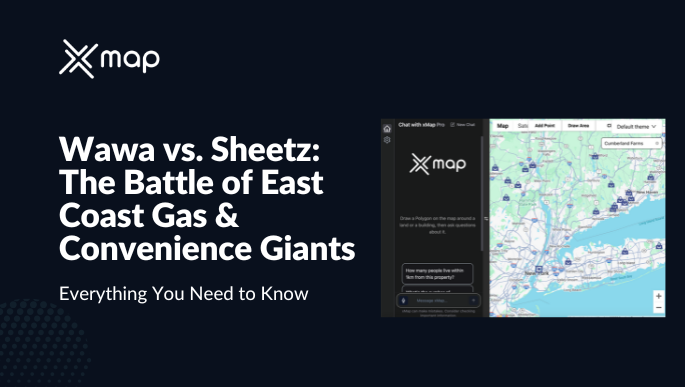Wawa vs. Sheetz: The Battle of East Coast Gas & Convenience Giants (2025)

- Remove the current class from the content27_link item as Webflows native current state will automatically be applied.
- To add interactions which automatically expand and collapse sections in the table of contents, select the content27_h-trigger element, add an element trigger, and select Mouse click (tap).
- For the 1st click, select the custom animation Content 27 table of contents [Expand], and for the 2nd click, select the custom animation Content 27 table of contents [Collapse].
- In the Trigger Settings, deselect all checkboxes other than Desktop and above. This disables the interaction on tablet and below to prevent bugs when scrolling.
The East Coast of the United States is home to two of the most beloved and fiercely competitive convenience store and fueling chains: Wawa and Sheetz. These two brands have built cult followings that go far beyond gas pumps. They’ve become part of regional identity, road trip lore, and daily routines for millions.
In this article, we’ll take a deep dive into the locations, customer experience, loyalty programs, and market strategies of Wawa and Sheetz, comparing their strengths, weaknesses, and growth opportunities in 2025. Along the way, we’ll incorporate fresh numbers, distribution data, and market insights to help you understand why this rivalry defines the convenience store landscape on the East Coast.
Wawa: A Regional Powerhouse with Growing Reach
Founded in 1964, Wawa started in Pennsylvania and gradually expanded its reach into the Mid-Atlantic and, more recently, Florida. Today, it is one of the most recognized names in the convenience sector, known for its fresh foodservice, customizable hoagies, and customer-first model.
As of 2025, Wawa operates over 1,100 stores across 8 states and Washington, D.C.. Its expansion into Florida has given it access to the booming Sunbelt market, while its core remains concentrated in Pennsylvania, New Jersey, and Delaware.
Wawa Store Distribution by State (2025)
Wawa’s strategy is clear: maintain dominance in the Mid-Atlantic while aggressively pursuing Florida and the Southeast. Rumors of Texas and Georgia expansions have surfaced, but its Florida performance will determine how fast those ambitions roll out.
Sheetz: Quirky, Youth-Oriented, and Expansion-Ready
Where Wawa leans into foodservice and reliability, Sheetz thrives on quirky branding and a younger, road-warrior vibe. Founded in 1952 in Altoona, Pennsylvania, Sheetz has grown into a chain of more than 720 stores across six states by 2025.
Its playful red branding, emphasis on customizable “MTO” (Made-To-Order) menus, and focus on convenience for late-night and road-trip culture give it a different feel from Wawa’s more “everyday meal” strategy.
Sheetz Store Distribution by State (2025)
Sheetz’s biggest opportunity lies in North Carolina and Virginia, where its density is growing rapidly. Analysts suggest it may also move into Tennessee in the next three years.
Side-by-Side: Store Count and Geographic Focus
The rivalry between Wawa and Sheetz often sparks heated debates among East Coast residents. But what does the data show in 2025?
Customer Experience: Hoagies vs. MTOs
One of the defining features of this rivalry is foodservice innovation.
- Wawa’s Hoagies: Its freshly prepared hoagies, breakfast sandwiches, and coffee have made Wawa as much a quick-service restaurant as a gas station. In fact, over 65% of Wawa’s revenue now comes from foodservice rather than fuel.
- Sheetz’s Made-To-Order (MTO) Menu: Sheetz pioneered touchscreen ordering in the 1990s, and by 2025, it continues to push boundaries with 24/7 customizable meals, milkshakes, and even quirky menu items like fried appetizers. Foodservice represents 58% of Sheetz’s total revenue.
Both chains invest heavily in mobile apps and ordering convenience. Wawa’s mobile loyalty app has surpassed 13 million downloads, while Sheetz’s “Sheetz Freakz” app boasts over 9 million active users.
Loyalty Programs and Membership Models
Wawa and Sheetz both understand the power of loyalty.
Loyalty Program Comparison (2025)
EV Charging: Who’s Winning the Future?
With the rise of electric vehicles, both chains are racing to install EV chargers.
- Wawa: Over 190 stores now have EV chargers (Tesla Superchargers or Electrify America), making it one of the leading gas brands for EV adoption.
- Sheetz: Currently has 160 EV charging locations, often strategically located along interstate highways to serve long-haul drivers.
EV Charging Footprint (2025)
Interestingly, while Wawa has more chargers, Sheetz has a higher percentage of locations equipped with EV infrastructure, showing its highway-first mindset.
Market Share and Revenue
Wawa generated $16.2 billion in revenue in 2024, with 2025 projections reaching $17.1 billion. Sheetz, slightly smaller in scale, recorded $10.5 billion in 2024 and expects to cross $11.2 billion in 2025.
Though Wawa leads in total revenue and store count, Sheetz’s per-store revenue is higher on average, driven by strong margins on prepared food and late-night traffic.
Cultural Impact: More Than Just Gas
Both chains have become symbols of identity. In Pennsylvania, “Wawa vs. Sheetz” debates are part of local culture, even inspiring memes, T-shirts, and online battles.
- Wawa is often portrayed as more family-friendly and practical.
- Sheetz is painted as fun, edgy, and ideal for younger crowds.
Conclusion: A Rivalry That Shapes the Industry
The Wawa vs. Sheetz battle is not just about gas—it’s about food, culture, and convenience. In 2025, Wawa dominates in scale and geography, while Sheetz stands out in brand personality and per-store profitability.
Both chains are well positioned for the future, with foodservice, EV adoption, and loyalty apps driving growth. For consumers, it means better food, more charging options, and fierce competition that keeps prices and services competitive.
As the industry evolves, one thing is clear: whether you’re team Wawa or team Sheetz, you’re part of one of the most passionate customer bases in America.
Get in Touch
Whatever your goal or project size, we will handle it.
We will ensure you 100% satisfication.
"We focus on delivering quality data tailored to businesses needs from all around the world. Whether you are a restaurant, a hotel, or even a gym, you can empower your operations' decisions with geo-data.”



